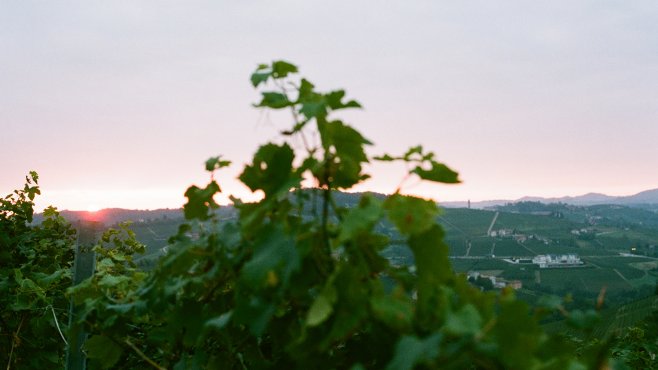Piedmont
Piedmont, along with Tuscany is Italy's most important wine region. Its name, derived from the Latin "pedem montis" (at the foot of the mountain), perfectly captures its geography, with the majestic Alps to the north and west and the fertile plains of the Po Valley to the south and east. The quality of local wines is the best in Italy. Vineyards have the lowest yields, there are the most DOCG wines, and even the two oldest DOCG appellations come from Piedmont. Winemaking is concentrated in the southern part of the region, especially in Cuneo, Asti, and Alessandria. The climate is moderated by a large number of rivers, winters are cold and long, and summers are dry and hot. Although Piedmont is a northern region, mainly red varieties (70%) such as Barbera, Nebbiolo, and Dolcetto are grown here. The most widespread white varieties are Cortese, Moscato Bianco, and Arneis.
The highest quality Piedmont variety is undoubtedly Nebbiolo with high tannins and acidity, which produces the "king of Italian wines," Barolo DOCG, made in eleven areas. Around the villages of La Morra and Barolo, there is more limestone subsoil and richer soils, which give rounder wines, fruitier and drinkable earlier. The surroundings of Serralunga d'Alba, Castiglione Falletto, and Monforte d'Alba, on the other hand, have poorer limestone-sandstone soils, and wines from these areas have high tannins and great aging potential. Another iconic Piedmont wine, based on Nebbiolo, is the lighter and more elegant Barbaresco from the area around the village of the same name.
The most cultivated variety, however, is Barbera with a very intense fruity character and fresh acidity. The most famous Barberas come from the Asti and Alba areas.
The most famous Piedmont white wine is Gavi from the Cortese variety. Most production is concentrated around Gavi, but even around the village of Tessarolo, very interesting wines with this appellation are made. Thanks to the higher altitude around 300 m above sea level, the Gavi wines from this area are less fruity, more mineral, structured, and fresh compared to the classic Gavi wines. This is also contributed to by the specific composition of the clayey soil, which is unusually distinctly red and very rich in minerals.
Another very old local variety, although not so widespread, is Arneis. This very challenging variety to grow almost disappeared in the past, but thanks to the efforts of several winemakers, it was saved and replanted mainly in the Roero area, where it produces very fruity wine with higher acidity and great potential.
